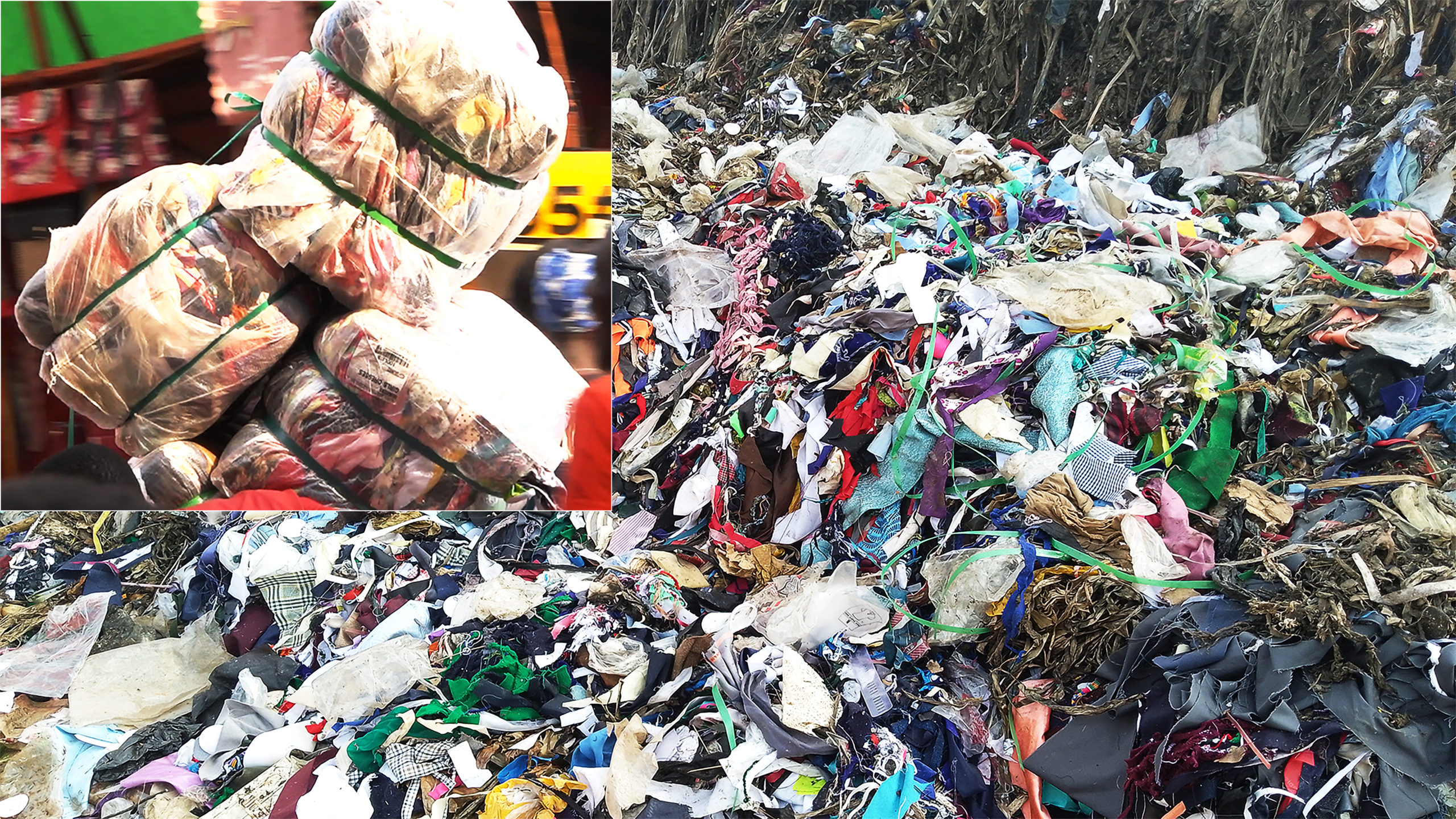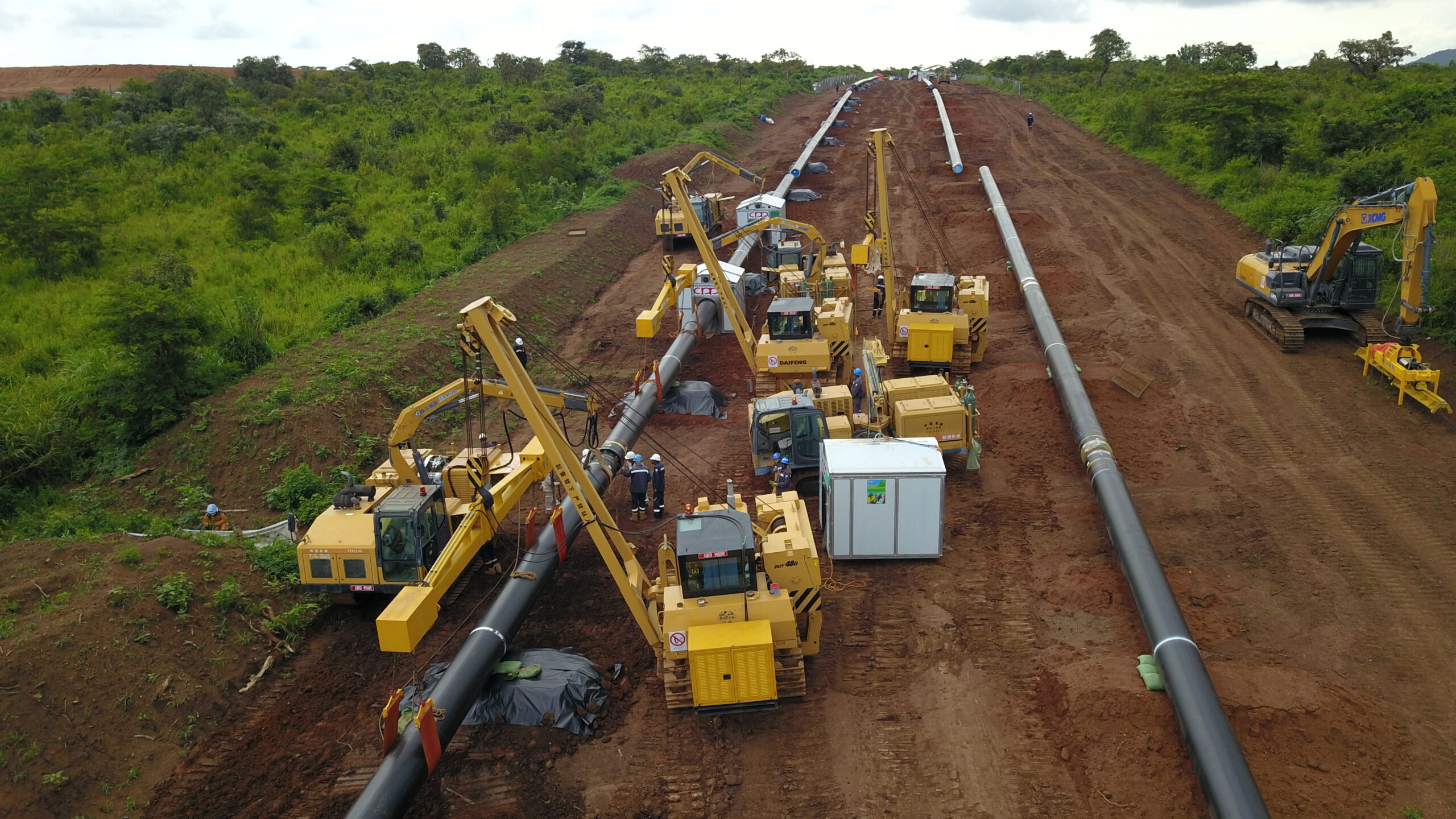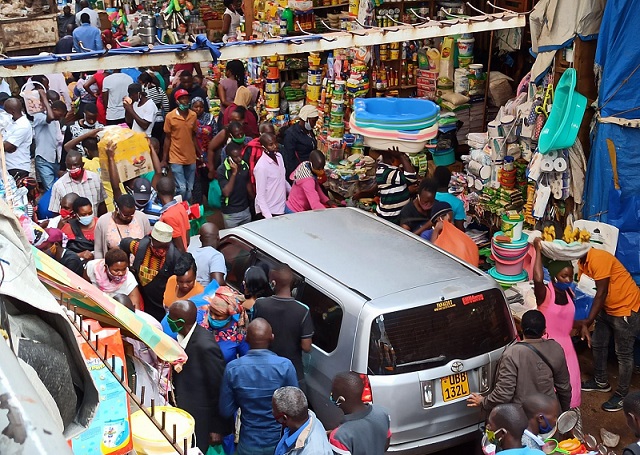Will Textile Recycling Solve Uganda’s Environmental Fraud?

Ugandans, like many other Africans, have a high appetite for cheap second-hand clothes, a love story that has facilitated another waste frontier, textile waste as population grows north of 46.5 million. Recently, a partnership between UK-based firm, WasteAid, MTAC (a local tertiary government institute) and Uganda Tailors Association reached agreement to launch a 2-year pilot textile waste recycling project, kickstarted in the capital, Kampala. Amidst this, polished environmental fraud persists and extra hindrances await as other forms of municipal solid waste upset the country’s push for circularity.
20 minutes from the central business district lies the profound waste mountain, Kiteezi landfill that has for the past 20 years been relieving the metropolitan area of a big crisis. Unfortunately, the sanitary engineered landfill, which some experts prefer to categorically call a dumpsite, can no longer sustain the robust waste stream. The portfolio includes plastics, polyethylene, textile, food waste, paper, electronics among others. Apparently, there is an imminent plan by the Ministry of Energy and Mineral Development to decommission and transform it into a biogas facility with feasibility studies already undertaken to set up a 4.4MW biogas plant considering the fact that about 82% of the generated waste is organic.
Tonnes of second-hand bales of clothes are imported about 3 times a week and the product churned out in major markets such as Owino, Nakawa and among street vendors that are often active in the evening hours. Big portions are sent to also cover countrywide demand. According to Martin Mubiru, a trader in Owino market, demand for second-hand clothes is informed by two major factors that include just how cheap they are, which matches the biting poverty among most Ugandans, and the uniqueness of the fabrics.
“Shs. 60,000 simply gets you one new trouser. But it can fetch you 5 second-hand trousers. Still, second-hand clothes are original and of good quality, coming from western countries where manufacturers produce good stuff.” Martin explains the love story.
The latest information from traders indicates China as the leading source of fabrics besides other sources such as the United Kingdom (UK) and America. In the UK for instance, about 336,000 tonnes of unwanted clothes are dumped every year. To keep them out of the dustbin, they are either donated or sold for re-use. That’s where Sub-Saharan Africa and Uganda come into the equation.
All the Way to the Landfill
Mitchelle Wilson, the director of programs at WasteAid hints that 40% of the imported second-hand clothes is destined for waste to landfills such as Kiteezi. Several fail to meet market demand and easily dropped as shreds, offcuts or intact fabrics. December and January are notable months when sales terribly drop resulting into dead stock that joins the waste stream. The waste is co-mingled with other forms and despite activities such as picking and sorting at the site, no amount would undo the dumped lot.
“If you find something worthy wearing for instance as a work attire at the site, you take it and wash.” Namata Resty, a picker at Kiteezi landfill informs just how some textile waste can luckily be re-used. But for the 5 years she’s been working at the landfill, such opportunities are rare.
The lot falls within the 30% composition in most towns. That also includes electronics, components that are usually undermined with little to no discussion at all compared to other waste forms such as plastics and polyethylene. Jointly, they add to the 220 tonnes of waste generated daily in the city with just 59% collected.
A Bad Cherry for the Environment
Unlike food and other waste products that easily undergo biological decomposition, crucial for soil fertility, and energy harvesting through anaerobic digestion, textile would take as many as over 200 years in the ground. As different people find pride in the latest fashions, the growing bulk from both second-hand clothes and fast fashion has cast a big pollution toll on the environment where some is simply burnt especially at household level as the rest lays unchanged in dumpsites, gardens and sewerage channels.
Chemicals, water, energy and other resources equivalent to investment are used in the manufacture. During decomposition, methane, a profound greenhouse gas is generated, toxic chemicals and dyes leak into the soil as leachate contaminates nearby streams and underground water where the water table is so high. This has gross impact on aquatic species, plant growth, livestock that drinks such water and humans.
Waste to Resource in a Fraudulent Circular Economy
In Mid-February, 7 industries in Njeru, a town close to the formerly prosperous industrial area, Jinja, were indicted over water pollution and several adjacent villages red-listed. Since 2019, untreated effluent from the industries producing steel, food, plastics and other products has been discharged into the streams that connect to River Nile. Unfortunately, despite outcry from the locals, the National Environment Management Authority (NEMA) seems unbothered, choosing to fend off inquest into the underlying circumstances.
In the textile project involving WasteAid, MTAC and Uganda Tailors Association, government is still represented. The Ministry of Trade, Industry and Cooperatives will support industrial policy, and NEMA to implement the circularity program through its 10-month-old circularity unit, irrespective of the signs that point towards environmental fraud as polluting industries remain untouched, holding onto their pollution licenses despite breach of mandate.
WasteAid will take lead, piloting the project. According to Soteri Nabeeta, the Executive Director of Management Training and Advisory Centre (MTAC), the institute will lead the skilling and retooling of workers, and a hub to be set in Nakawa, its headquarters. The National Curriculum Development Centre (NCDC) shall integrate innovation into the curricula.
Uganda Tailors Association, buoyant about the green jobs, will use its over 20,000 members where some are into cottages such as SOPATRA Artifacts to recycle textile and produce several other utilities such as bow ties, pillows and other products.
President Museveni’s directive on second-hand clothes last year holds several interpretations that also initially worried the textile recycling pact. Meanwhile, it wasn’t occasioned to protect the environment. The intention was to cushion the local manufacturing industry from predatory textile trade. Through Buy Uganda Build Uganda (BUBU), a major initiative to promote locally manufactured goods, the textile industry would profit. Whatever environmental benefits arising from it would simply be secondary or accidental. Market sentiments illustrate doubt over the fruition of the directive, citing similar developments that failed for example the ban on the use of polyethylene where the product still remains a major consumer favourite to date.
Waste to resource holds the potential to accelerate Uganda’s circular economy, as evidenced in developments like textile and plastic recycling, the energy ministry’s biogas project that is set to utilize Kiteezi landfill and the alternative to be established in Dundu, Mukono. However, bigger success lies in the implementation of supporting policies and ordinances, transparence among regulatory bodies and building consumer awareness and behavioural change for waste handling where sorting at source is so crucial in waste segmentation and use.




